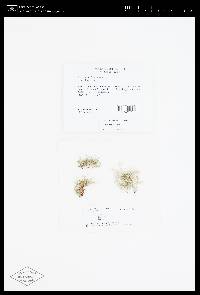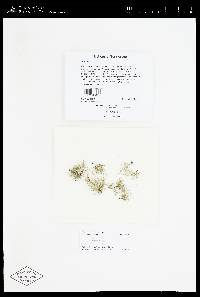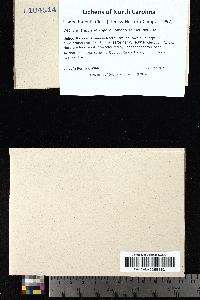
Consortium of Lichen Herbaria
- building a Global Consortium of Bryophytes and Lichens as keystones of cryptobiotic communities -
- Home
- Search
- Images
- Species Checklists
- US States: O-Z >
- US National Parks
- Central America
- South America
- US National Parks
- Southern Subpolar Region
|
|
|
|
Family: Parmeliaceae
|
Nash, T.H., Ryan, B.D., Gries, C., Bungartz, F., (eds.) 2007. Lichen Flora of the Greater Sonoran Desert Region. Vol 3. Thallus: erect-shrubby to supendant, usually between 2 and 6 cm long branching: isotomic-dichotomous at least in apical parts, mostly divergent basal part: mostly with reddish brown pigment or of the same color as branches, with conspicuous annular cracks branches: usually tapering, sometimes slightly irregular; lateral branches: not or slightly to distinctly narrowed at ramification point; foveoles and transversal furrows: sometimes present segments: terete to slightly ridged, cylindrical to slightly sausage-like, with slightly inturned ends tubercles: verrucous, sparsely and unevenly distributed fibercles: absent fibrils: 2-4 mm long, slender sparsely and unevenly distributed close to basal part, absent in upper parts soralia: punctiform to large, slightly stipitate, smaller than half diameter of branches but often enlarged, few to numerous, arising on low tubercles in lower part of thallus, and initially on the cortex of the apices isidiomorphs: mostly visible on young soralia but sometimes densely covering mature, large and capitate soralia, never single on plain cortex, rarely slightly blackened at tips pseudocyphellae: absent cortex: thin to thick (5-9%), dull, distinctly transversally cracked at base of main branches; edges of cracks: even or slightly inturned medulla: thick, compact to dense, and often rose pigmented periaxially axis: moderately thick, almost always pink pigmented Apothecia: not seen Spot tests: medulla K+ yellow turning red, C-, KC-, P + orangish yellow Secondary metabolites: medulla with norstictic and salazinic acids (major) and ±protocetraric acid (accessory). Substrate and ecology: on acidic rock in the mountains between 2300 and 2800 m World distribution: so far only known from North America Sonoran distribution: Santa Rita Mountains in Arizona and Sierra Madre Occidental in Chihuahua and Sinaloa. Notes: Potentially U. halei may be confused with U. amblyoclada as both occur on rock in the area. Usnea halei differs from U. amblyoclada by having a dull cortex, a different type of soralia with a different ontogeny, fibrils that are never spinulous although slender, short papillae and a different chemistry. |
Powered by Symbiota
























